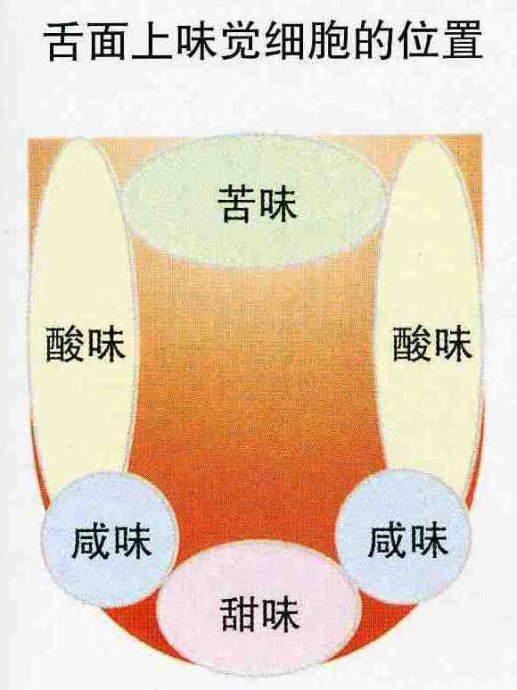Your coffee is sour and tells you where your tongue tastes sour.
Among the Chinese coffee friends I come into contact with, they sometimes ask, "is your coffee sour?" Or "I don't like sour coffee". At first I was very skeptical and found it strange, but then I gradually realized that "this acid is not the other acid".
Haha, it turns out that "Acidity" is often used in our coffee tasting language, which is translated as "acidity" in Chinese, which is often misunderstood as the acidity in acid value or the sour taste of lemon or vinegar. In fact, it is not a concept. Coffee people usually describe the "Acidity" of coffee flavor, which is a lively, bright, fresh and refreshing feeling, just like tasting wine to describe the dry taste.

The position of taste cells on the tongue
Usually, when distinguishing the taste of coffee, the coffee liquid is covered with sour, bitter, sweet and salty taste buds on the tongue, so that a soft sour taste can be felt on both sides of the tongue. Among them, although the coffee is not salty, taste does not need salty taste, but still take the initiative to consciously experience it evenly and carefully, so that we can master the skills to distinguish the different tastes of coffee.
Acidity (acidity) is the most important item in coffee tasting. Without acidity, coffee beans are like lifeless and tasteless.
"Acidity" has many different characteristics, which is an important basis for distinguishing coffee beans from different producing areas, such as coffee from Yemen or East Africa, whose acidity has an impressive fruity aroma or a red wine-like taste, while some from the Central American highlands or the Caribbean often have so-called bright acidity.
Generally speaking, the deeper the coffee beans are roasted, the acidity decreases, but some raw beans with high acidity show more sharp and irritating taste when they are roasted deeply. A few days ago baked a batch of Papua New Guinea (Papua New Guinea) beans between City and Full City, although its acidity is high, but not out of balance, has a very rich high-key flavor changes, friends are full of praise.
So when it comes to "this acid is not the other acid", I am afraid that Chinese friends drink too much Nestle instant, and are afraid of the strong sour taste, mistakenly thinking that it is the acidity described by what we call fresh coffee!
Important Notice :
前街咖啡 FrontStreet Coffee has moved to new addredd:
FrontStreet Coffee Address: 315,Donghua East Road,GuangZhou
Tel:020 38364473
- Prev

Evaluation of Illy Red taste of high-quality coffee beans
The reason for this evaluation of Illy is that I happen to have a can on hand. Moreover, the last time I tried Strada's transformer experiment at the Illy headquarters in China, I used illy as the evaluation object. In fact, every time I write a coffee bean evaluation, I always have a little struggle in my heart. Because I like the coffee, I may not be able to accurately express its flavor; even if I can express it, readers have not
- Next

The General knowledge of Fine Coffee Culture and the Coffee Road in Turkey
Coffee in the ancient Middle East, like the legendary myth of the 1001 night, is a veiled girl with a thousand faces, which can not only help get close to God, but also wash the spring of sadness. When it comes to coffee, we have to mention the Middle East (Turkey) coffee, because whether from the perspective of Islam or Christianity, the origin of coffee is in the remote and mysterious mountains of the Middle East. After the thirteenth and fifteenth centuries,
Related
- Beginners will see the "Coffee pull flower" guide!
- What is the difference between ice blog purified milk and ordinary milk coffee?
- Why is the Philippines the largest producer of crops in Liberia?
- For coffee extraction, should the fine powder be retained?
- How does extracted espresso fill pressed powder? How much strength does it take to press the powder?
- How to make jasmine cold extract coffee? Is the jasmine + latte good?
- Will this little toy really make the coffee taste better? How does Lily Drip affect coffee extraction?
- Will the action of slapping the filter cup also affect coffee extraction?
- What's the difference between powder-to-water ratio and powder-to-liquid ratio?
- What is the Ethiopian local species? What does it have to do with Heirloom native species?

